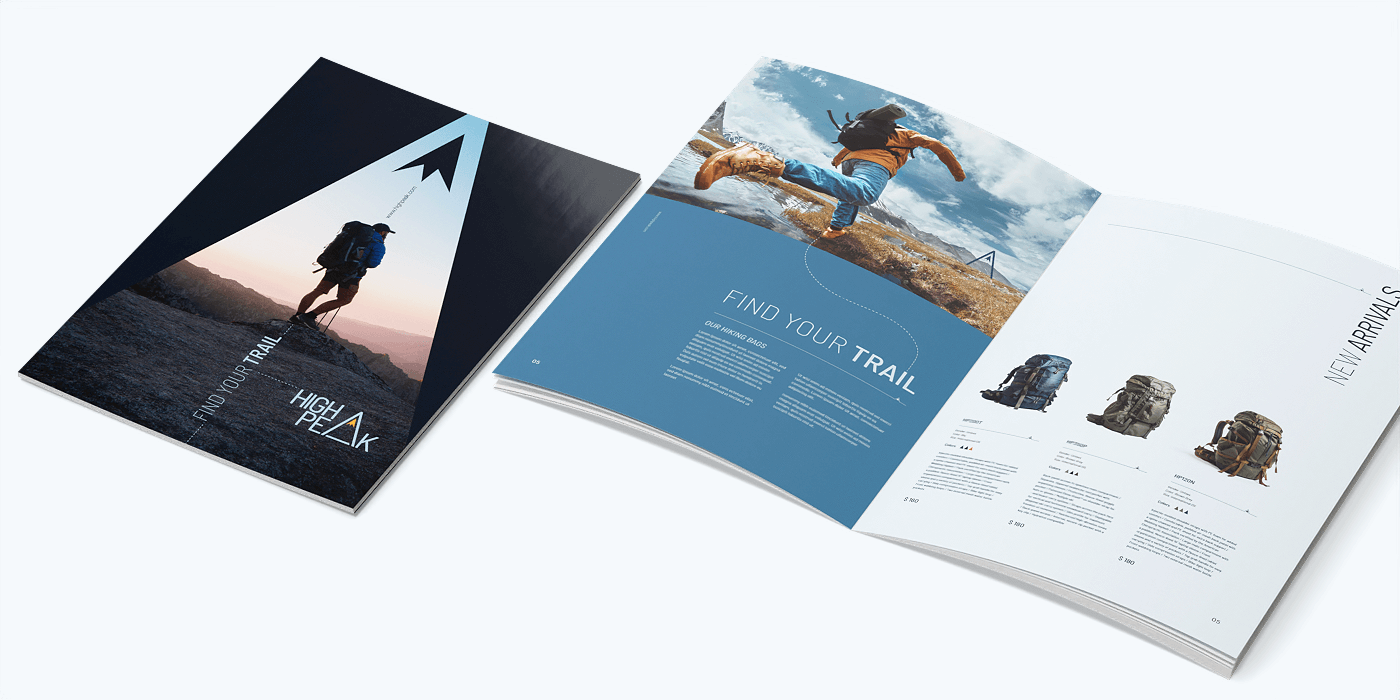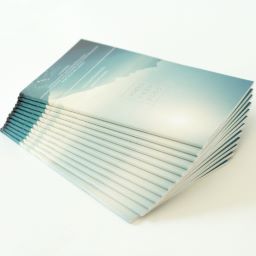Why More Companies Are Turning to Local Booklet Printing Services
Why More Companies Are Turning to Local Booklet Printing Services
Blog Article
The Crucial Guide to Comprehending Booklet Printing Options and Techniques
The process of pamphlet printing involves multiple considerations that can substantially influence the final item. From selecting the ideal style and size to understanding the subtleties of binding techniques, each selection plays an essential function. Furthermore, factors such as paper supply and printing methods more influence the efficiency of the pamphlet. As one browses these options, it comes to be essential to realize just how they adjoin and what that means for the overall result.
Comprehending Pamphlet Layouts and Sizes
When considering pamphlet printing, understanding the numerous layouts and dimensions readily available is essential for accomplishing the wanted discussion. Brochures can be created in numerous layouts, including saddle-stitched, spiral-bound, and perfect-bound, each offering distinctive advantages. Typical sizes vary from common letter (8.5 x 11 inches) to smaller options like A5 (5.8 x 8.3 inches), permitting for adaptability based on web content and target audience.Selecting the ideal dimension can affect both the layout and reader engagement. Bigger sizes could fit aesthetically driven content, while smaller formats may be extra mobile and user-friendly. Furthermore, the variety of web pages impacts the option of binding technique, as thicker pamphlets might require stronger bindings. Inevitably, recognizing these facets enables an extra customized strategy, ensuring that the last item straightens with the intended message and visual, boosting the general effectiveness of the interaction.
Selecting the Right Paper Stock

Binding Approaches: Options and Considerations
When it concerns binding methods for pamphlets, a number of choices are available, each with distinct benefits. Saddle stitch binding uses an affordable service for thinner booklets, while ideal binding methods give an even more sleek search for thicker magazines. Wire-O binding attracts attention for its durability and simplicity of use, making it excellent for papers that require flexibility.
Saddle Stitch Binding
Saddle stitch binding supplies a useful and affordable option for assembling booklets, making it a preferred selection amongst companies and authors. This binding approach entails folding sheets of paper in half and stapling them along the fold line, developing a organized and cool look. Typically suitable for booklets with a lower page count, saddle stitching is suitable for magazines, brochures, and training products. The simplicity of this strategy enables quick production and is frequently favored for brief runs or advertising things. However, it is necessary to note that saddle stitch binding might not appropriate for thicker booklets, as the back may not stand up under enhanced weight. On the whole, it remains a reputable choice for several printing jobs.
Perfect Binding Techniques
Perfect binding is an extensively used method that provides a expert and polished finish to pamphlets and magazines. This approach entails gluing the web pages together at the spinal column making use of a solid adhesive, permitting for a tidy edge and the ability to hold a bigger number of pages contrasted to saddle stitching. Perfect binding is especially ideal for thicker brochures, such as brochures and yearly records, where a strong, level back is desired. In addition, it offers the option for a published cover that can be created to improve aesthetic appeal. Nonetheless, considerations such as page matter, paper weight, and the intended usage of the brochure ought to be thought about, as they can impact toughness and general top quality.
Wire-O Binding Alternatives
Wire-O binding, known for its sturdiness and flexibility, uses an exceptional option for booklets that require easy web page transforming and a professional look. This binding technique employs a series of metal loops that hold web pages safely, allowing them to exist flat when open. It is specifically appropriate for handbooks, discussions, and directories as a result of its robust nature. Wire-O binding is available in various colors and diameters, suiting different web page matters and densities. Furthermore, it permits the inclusion of covers and tabs, improving the booklet's general visual. Factors to consider for Wire-O binding include the choice of cable color, the size of the loops, and the extent of modification desired, every one of which can greatly affect the final item's appearance and capability.
Digital vs. Offset Printing: Which Is Best for You?
When picking a printing technique for brochures, recognizing the differences in between digital and counter printing is vital. Digital printing uses contemporary innovation to generate top quality prints quickly and economically, making it ideal for brief runs or tasks calling for quick turnaround times. It enables customization, providing the ability to publish on-demand with marginal waste.In comparison, balance out printing is a conventional method that excels in generating big quantities with regular top quality. It entails transferring ink from a plate to a rubber blanket, then to the paper, which causes specific information and vivid shades. Counter printing typically needs longer setup times and is much more cost-effective for bigger volumes.Ultimately, the choice between electronic and counter printing depends on task requirements, budget, and preferred amount. For little, time-sensitive jobs, electronic might be the very best option, while countered may be preferable for bigger, premium manufacturings.

Creating Your Brochure: Tips and Finest Practices
When designing a brochure, careful focus to layout, font style choice, and shade use can greatly improve its effectiveness. A well-structured design overviews the viewers's eye, while ideal font styles ensure readability and share the preferred tone. Additionally, efficient use shade can stimulate emotions and emphasize crucial details, making the overall layout extra impactful.
Selecting the Right Format
How can one successfully pick the best format for a booklet? It is essential to review the brochure's purpose and target audience. A clean, arranged format boosts readability and engagement. Making use of a grid system can assist in aligning aspects continually, producing a specialist look. Additionally, incorporating visual hierarchy with varying sizes and positionings of photos and message can assist the reader's eye and emphasize vital information. It is additionally essential to leave enough white space, which avoids congestion and enables far better focus. Evaluating various formats through mock-ups can provide insight into exactly how the style performs in real-world scenarios, guaranteeing that the last item meets both useful and aesthetic demands.
Choosing Suitable Fonts
A well-chosen font style can substantially boost the total style of a brochure, enhancing the layout and enhancing the material's message. The selection of typefaces must think about readability, specifically for body text, as it ensures the details is accessible to all viewers. Sans-serif fonts are commonly favored for digital styles, while serif typefaces can provide a typical feeling in published materials. It's advisable to limit font choices to two or 3 to preserve visual coherence. Furthermore, typeface dimension plays an important Clicking Here function; headings must be distinct but not overwhelming, while body text need to be comfy for analysis. When picking font styles, positioning with the pamphlet's theme and target market look at more info is essential for effective interaction and visual allure.
Reliable Use Color
Shade works as an effective tool in brochure style, leading and forming perceptions visitor emotions. It can evoke sensations of excitement, trust fund, or calmness, depending on the hues chosen. Developers should consider shade concept concepts, making certain that the chosen combination straightens with the pamphlet's message and target market. Utilizing warm shades like red and orange can develop seriousness, while cooler tones like green and blue foster tranquility.Additionally, contrast plays an important function; corresponding shades can boost readability and aesthetic allure. Consistency in color usage across web pages further strengthens brand identity and cohesion. Inevitably, effective shade execution not just records focus yet additionally strengthens the brochure's function, making it a crucial facet of effective style.
Completing Touches: Coatings and Special Effects
While many consider the content and design of a pamphlet one of the most important aspects, the completing touches, such as coverings and special results, play a crucial duty in improving its overall allure. Coatings can give security and toughness, making sure that the booklet withstands damage. Matte surfaces provide a sophisticated, non-reflective surface area, while glossy coatings can make shades appear even more attractive and vibrant. Unique effects, like embossing or aluminum foil stamping, include a tactile measurement that can produce a memorable perception. These techniques can highlight details areas, accentuating important info or creating aesthetic interest. Furthermore, UV coating can give a high-shine finish that boosts the overall look.Together, these completing touches not just enhance the brochure's visual yet also communicate professionalism and trust and interest to information, ultimately leaving a long-term effect on the visitor.
Price Considerations for Brochure Printing
Recognizing the different price factors to consider for brochure printing is crucial for companies and companies aiming to enhance their spending plans. Key aspects affecting prices consist of the option of binding, ink, and paper methods. Higher high quality products, such as exceptional paper or specialized inks, generally enhance the general expenditure. In addition, the dimension and page count of the booklet play a considerable function; bigger brochures need even more sources and time to produce.Another vital factor to consider is the printing technique, whether digital or balanced out, as each has its own prices structure and suitability for different quantities. Companies ought to likewise factor in style costs, which can vary based on complexity and the use of professional services. Ultimately, shipping and handling fees can add to the total, especially for large orders. By evaluating these components, organizations can make educated decisions that align with their economic abilities while accomplishing the wanted high quality in their published products.
Often Asked Concerns
What Are the Ecological Effects of Booklet Printing?
The environmental impacts of booklet printing consist of logging from paper production, carbon emissions from transport, and waste generation from disposed of materials - Booklet Printing. Sustainable techniques, such as utilizing recycled paper and green inks, can minimize these impacts
How Can I Ensure Shade Accuracy in My Booklet?
To assure color accuracy in a pamphlet, one ought to utilize adjusted monitors, use expert color accounts, conduct examination prints, and choose high-quality printing solutions that provide shade matching and proofing choices for best outcomes.
What Is the Typical Turn-around Time for Booklet Printing?
The regular turnaround time for pamphlet printing varies relying on the complexity and amount - Booklet Printing. Typically, it varies from a few days to 2 weeks, influenced by aspects such as printing techniques and ending up demands
Exist Minimum Order Quantities for Booklet Printing?

Can I Publish Pamphlets in Numerous Languages?
Printing booklets in multiple languages is possible. Numerous printing services provide choices for multilingual or multilingual formats, permitting reliable interaction. Cautious preparation assurances that create components suit numerous languages without endangering readability or aesthetics. Additionally, factors such as paper stock and printing techniques further affect the performance of the pamphlet. When taking into consideration pamphlet printing, comprehending the different styles and sizes available is important for achieving the wanted discussion. When choosing a printing technique for brochures, comprehending the differences between electronic and counter printing is crucial. In addition, the size and page count of the pamphlet play a substantial function; larger booklets call for more resources and time to produce.Another vital factor to consider is the printing method, whether digital you can try this out or countered, as each has its very own pricing framework and viability for different amounts. The environmental impacts of pamphlet printing include logging from paper manufacturing, carbon emissions from transport, and waste generation from disposed of materials.
Report this page